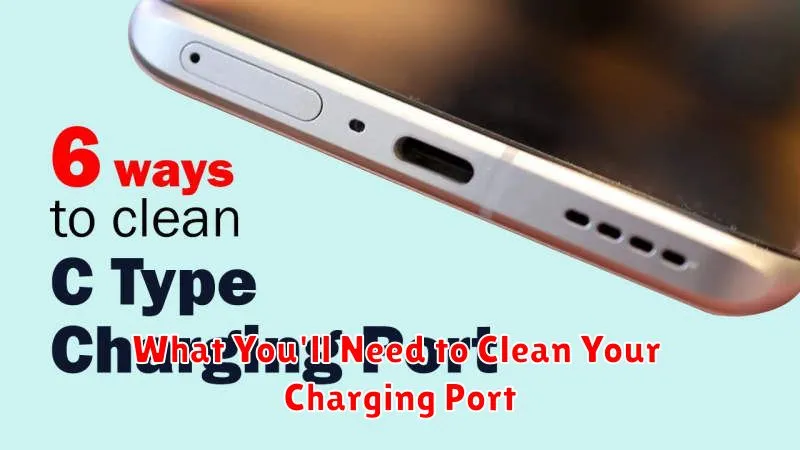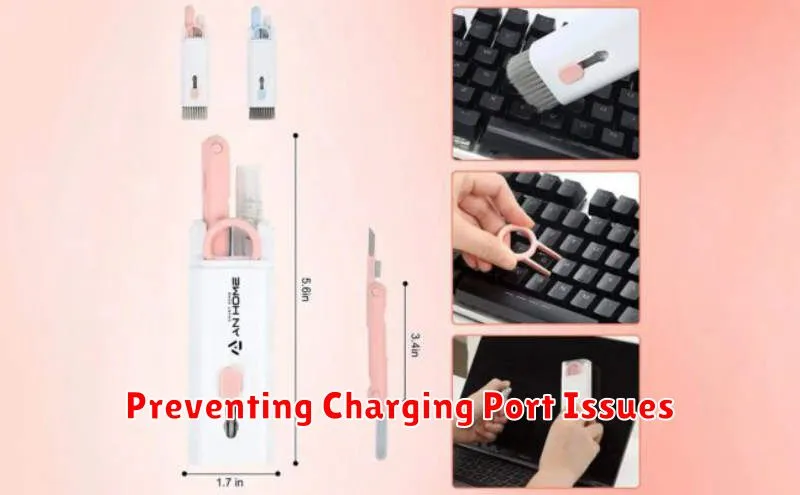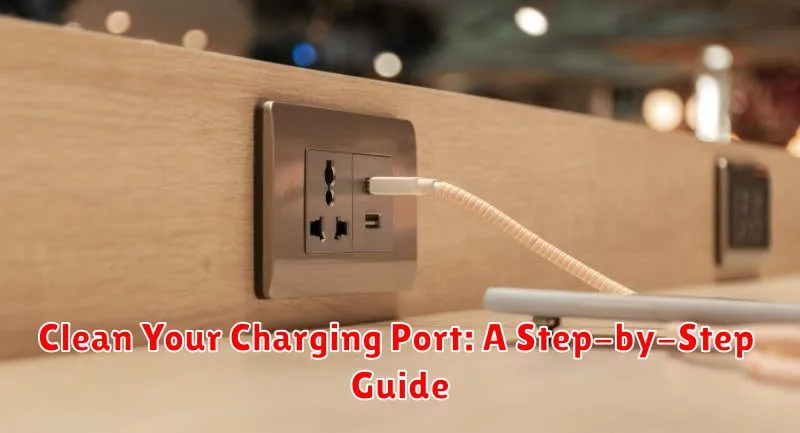A dirty charging port can lead to a variety of frustrating problems, from slow charging to a device that won’t charge at all. Dust, lint, and other debris can accumulate in the port, preventing a secure connection between your device and the charging cable. This can damage your charging port over time, requiring costly repairs. This step-by-step guide will show you how to clean your charging port safely and effectively, regardless of your device type, ensuring optimal charging performance and extending the life of your device. Learn how to properly clean your charging port to maintain optimal device functionality and prevent future charging issues.
Keeping your charging port clean is a crucial aspect of device maintenance often overlooked. A clean port ensures a strong connection for efficient charging. This guide provides clear, concise instructions on how to clean your charging port using common household items. By following these steps, you can avoid the inconvenience and expense of a malfunctioning charging port. Whether you’re experiencing charging problems or simply want to maintain your device, this guide offers the essential steps to clean your charging port and ensure reliable charging for years to come.
Why a Clean Charging Port Matters
A clean charging port is crucial for the proper function and longevity of your electronic devices. Debris accumulation, such as dust, lint, and pocket fluff, can obstruct the connection between your charging cable and the device’s internal connectors.
This obstruction can lead to several charging issues. It can prevent the device from charging altogether, cause slow or intermittent charging, and even damage the charging port itself over time. A poorly connected charger can also lead to overheating, posing a safety hazard.
Maintaining a clean charging port ensures a reliable connection, allowing your device to charge efficiently and safely. Regular cleaning can prevent costly repairs and prolong the lifespan of your devices.
What You’ll Need to Clean Your Charging Port

Gathering the right tools before you begin is crucial for effective and safe cleaning. Here’s what you’ll need:
Essential Tools
- A non-metallic cleaning tool: This is the most important item. A wooden or plastic toothpick, a SIM card ejector tool, or a specifically designed cleaning brush are all good options.
- A bright light source: This will allow you to clearly see inside the charging port and identify any debris.
Optional Tools
While not strictly necessary, these items can be helpful:
- Compressed air: A short burst of air can dislodge stubborn particles. However, use with caution and hold the can upright to prevent moisture from entering the port.
- Magnifying glass: This can be useful for a closer inspection of the port.
Steps to Clean Your Charging Port
Before you begin, power off your device completely. This is crucial for safety.
Step 1: Initial Inspection. Carefully examine the charging port using a bright light. Identify any visible debris like lint, dust, or compacted dirt.
Step 2: Compressed Air. Use a can of compressed air to gently blow away loose debris. Hold the can upright and use short bursts to avoid pushing debris further into the port.
Step 3: Gentle Probing (Optional). If compressed air isn’t sufficient, you can carefully try to dislodge stubborn debris. A non-metallic tool like a wooden toothpick or a plastic dental pick can be used. Insert it gently and avoid applying excessive force. Do not use metal objects as they can scratch and damage the delicate contacts.
Step 4: Final Inspection and Test. After cleaning, re-inspect the port to ensure all visible debris has been removed. Once you’re satisfied, power on your device and test the charging functionality.
What Not to Do When Cleaning Your Charging Port
Cleaning your charging port requires a gentle approach. Avoid these common mistakes to prevent damage:
Avoid Excessive Force
Never force anything into the charging port. Excessive force can bend or break the delicate pins inside, leading to permanent damage.
Skip the Conductive Materials
Do not use metal objects like paper clips or tweezers. These can scratch the contacts and cause short circuits. Similarly, avoid using anything wet or damp, including cleaning solutions containing liquids.
No Compressed Air
While compressed air might seem like a good idea, the high pressure can damage the internal components of your device. It’s best to avoid this method altogether.
Preventing Charging Port Issues

Proactive measures can help maintain a clean charging port and prevent future issues. By incorporating these habits into your routine, you can significantly reduce the risk of debris buildup and damage.
Firstly, consider the environment where you typically charge your device. Avoid dusty or dirty areas, as these contribute to debris accumulation in the port. If you frequently charge in such an environment, consider cleaning the port more regularly.
Secondly, pay attention to the cables and chargers you use. Damaged or frayed cables can shed particles into the charging port. Ensure you use high-quality cables and replace them promptly if they show signs of wear. Using the correct charger for your device also minimizes the risk of damage and debris.
Lastly, develop the habit of covering the port when not in use. Many phone cases come with built-in port covers. If yours doesn’t, consider investing in a dust plug. This simple measure can significantly reduce the ingress of dust and lint.
Signs of a Damaged Charging Port
A damaged charging port can manifest in several ways, hindering your device’s ability to charge properly. Recognizing these signs early can prevent further damage and potentially save you from costly repairs. Here are some key indicators to watch out for:
Physical Damage
Bent or broken pins inside the port are a clear sign of damage. This can prevent a secure connection with your charging cable. Look closely for any misalignment or debris lodged within the port. Loose port: If the charging port feels wobbly or loose within the device casing, it could indicate internal damage.
Charging Issues
Intermittent charging: If your device only charges in certain positions or stops charging randomly, it’s a strong indicator of a problem. Slow charging: While slow charging can be caused by other factors, it can also be a symptom of a damaged port. Device not charging at all: This is the most obvious sign, and likely indicates a serious issue with the port or other charging components. Overheating: Excessive heat emanating from the charging port during charging can signify internal damage.
When to Seek Professional Repair
While cleaning your charging port can often resolve charging issues, there are instances where professional repair is necessary. If you’ve tried the cleaning steps and your device still exhibits problems, it’s time to consider expert help.
Physical Damage: If you notice any bent or broken pins inside the port, or if the port itself is loose or detached from the device, attempting DIY repairs can worsen the situation. Seek professional assistance immediately.
Persistent Issues: If you continue to experience charging problems, such as slow charging, intermittent charging, or failure to charge altogether, even after cleaning, there might be an underlying hardware issue that requires professional diagnosis and repair.
Water Damage: If your device has been exposed to liquid and subsequently experiences charging problems, internal components might be affected. Professional repair is crucial in such cases to prevent further damage.
Warranty Considerations: If your device is still under warranty, attempting to repair the charging port yourself may void it. Contact the manufacturer or an authorized service center for warranty-covered repairs.

